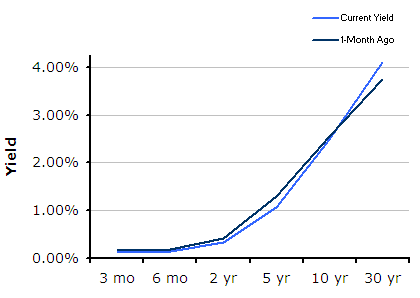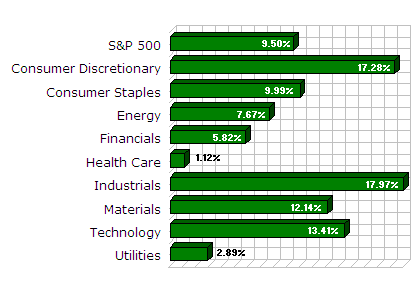
Market Commentary by Scott J. Brown, Ph.D., Chief Economist

The Federal Open Market Committee announced plans to further expand its holdings of securities. The FOMC expects to purchase a further $600 billion in long-term Treasuries by the end of Q211 ($75 billion per month) and will maintain its existing policy of reinvesting principal payments from its mortgage holdings into long-term Treasuries (about $35 billion per month). The FOMC indicated that it “will regularly review the pace of its securities purchases and the overall size of the asset-purchase program in light of incoming information and will adjust the program as needed to best foster maximum employment and price stability.” In its economic assessment, the FOMC said that “currently, the unemployment rate is elevated, and measures of underlying inflation are somewhat low, relative to levels that the Committee judges to be consistent, over the longer run, with its dual mandate.” The FOMC “anticipates a gradual return to higher levels of resource utilization in a context of price stability,” but added that “progress toward its objectives has been disappointingly slow.” The stock market seemed unsure of how to react to the Fed’s announcement, but rallied strongly the next day.
As expected, Republicans regained control of the House of Representative in the mid-term elections and gained seats in the Senate.
The economic data remained consistent with moderate growth in the near term. The October Employment Report was stronger than anticipated. Private-sector payrolls rose by 159,000, with figures for August and September revised a total of 93,000 higher (the three-month average was 136,000, enough to keep pace with the growth in the working-age population, but not enough to push the unemployment rate down). The unemployment rate held steady at 9.6%, with the broad (U-6) measure down slightly to 17.0%).
Next week, the economic calendar thins out considerably. Weekly jobless claims will be reported a day earlier than usual, due to the Veterans Day holiday (the bond market will be closed, but the stock market will be open).
Indices
| Last | Last Week | YTD return % | |
| DJIA | 11434.84 | 11113.95 | 9.65% |
| NASDAQ | 2577.34 | 2507.37 | 13.58% |
| S&P 500 | 1221.06 | 1183.78 | 9.50% |
| MSCI EAFE | 1675.07 | 1616.59 | 5.97% |
| Russell 2000 | 733.46 | 701.03 | 17.28% |
Consumer Money Rates
| Last | 1-year ago | |
| Prime Rate | 3.25 | 3.25 |
| Fed Funds | 0.25 | 0.25 |
| 30-year mortgage | 4.21 | 5.19 |
Currencies
| Last | 1-year ago | |
| Dollars per British Pound | 1.626 | 1.657 |
| Dollars per Euro | 1.419 | 1.484 |
| Japanese Yen per Dollar | 80.690 | 90.910 |
| Canadian Dollars per Dollar | 1.004 | 1.064 |
| Mexican Peso per Dollar | 12.259 | 13.298 |
Commodities
| Last | 1-year ago | |
| Crude Oil | 86.49 | 80.40 |
| Gold | 1380.60 | 1091.60 |
Bond Rates
| Last | 1-month ago | |
| 2-year treasury | 0.34 | 0.42 |
| 10-year treasury | 2.50 | 2.56 |
| 10-year municipal (TEY) | 3.85 | 3.94 |
Treasury Yield Curve – 11/05/2010

S&P Sector Performance (YTD) – 11/05/2010

Economic Calendar
| November 10th | — | Jobless Claims (week ending November 6th) Import Prices (October) Trade Balance (October) |
| November 11th | — | Veterans Day (bond market closed) |
| November 12th | — | Consumer Sentiment (mid-November) |
| November 15th | — | Retail Sales (October) |
| November 15th | — | Producer Price Index (October) Industrial Production (October) |
| November 17th | — | Consumer Price Index (October) Building Permits, Housing Starts (October) |
| November 25th | — | Real GDP (3Q10, 2nd estimate) |
| November 25th | — | Thanksgiving (market closed) |
| December 3rd | — | Employment Report (November) |
| December 14th | — | FOMC Meeting |
Important Disclosures
Past performance is not a guarantee of future results. There are special risks involved with global investing related to market and currency fluctuations, economic and political instability, and different financial accounting standards. The above material has been obtained from sources considered reliable, but we do not guarantee that it is accurate or complete. There is no assurance that any trends mentioned will continue in the future. While interest on municipal bonds is generally exempt from federal income tax, it may be subject to the federal alternative minimum tax, state or local taxes. In addition, certain municipal bonds (such as Build America Bonds) are issued without a federal tax exemption, which subjects the related interest income to federal income tax. Investing involves risk and investors may incur a profit or a loss.
US government bonds and treasury bills are guaranteed by the US government and, if held to maturity, offer a fixed rate of return and guaranteed principal value. US government bonds are issued and guaranteed as to the timely payment of principal and interest by the federal government. Treasury bills are certificates reflecting short-term (less than one year) obligations of the US government.
Commodities trading is generally considered speculative because of the significant potential for investment loss. Markets for commodities are likely to be volatile and there may be sharp price fluctuations even during periods when prices overall are rising. Specific sector investing can be subject to different and greater risks than more diversified investments.
Tax Equiv Muni yields (TEY) assume a 35% tax rate on triple-A rated, tax-exempt insured revenue bonds.
![]() Material prepared by Raymond James for use by its financial advisors.
Material prepared by Raymond James for use by its financial advisors.
The information contained herein has been obtained from sources considered reliable, but we do not guarantee that the foregoing material is accurate or complete. Data source: Bloomberg, as of close of business October 28th, 2010.
©2010 Raymond James Financial Services, Inc. member FINRA / SIPC.


